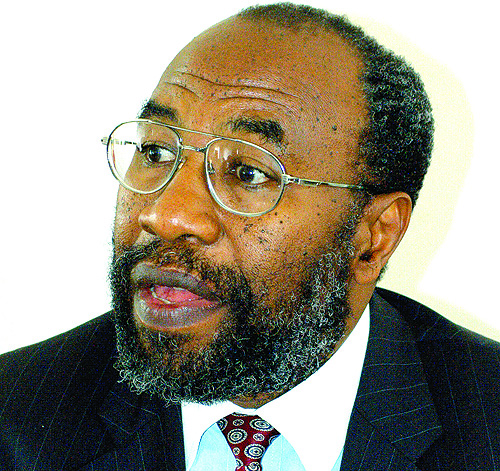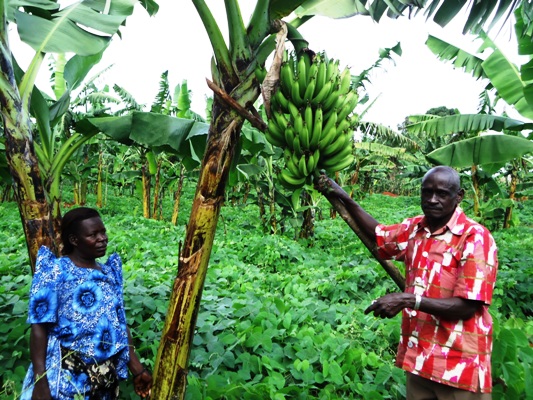Ugandan banks have been cautious towards lending to the private sector in recent years due to high Non-Performing Loans (NPLs) that have plagued the banking sector.
NPLs have largely been attributed to the sluggish economy that has seen many borrowers fail to pay back their loan obligations, leaving many banks counting losses.
This state of affairs has led to slow private sector credit growth, a thing that has compounded Uganda’s economic recovery from the 2011 crisis.
Nonetheless, real estate and trade have continued to enjoy increased lending from banks despite the difficult times. Personal Loans and Household Loans also remain high.
On the other hand, key sectors to Uganda’s economy like manufacturing and agriculture are not banks’ favourites.
This analysis is based on the latest Credit to Private Sector report released by the Bank of Uganda (BoU) on February 5, 2018. Further, we have only considered loans given to various sectors in the last four month-from September to December, 2017.
The good news is that credit to the private sector is steadily improving, according to the report.
The report shows that total industry loans to the private sector increased to Shs12.2trillion in December 2017, up from Shs11.99trillion in November. This may point to steady improvement in economic conditions in the country considering to the fact that the economy grew at 4% in 2016/17.
In October, total industry loans stood at Shs11.98trillion, from Shs11.78trillion in September, further pointing to recovery.
The Monetary Policy Report for December says that average annual Private Sector Credit growth for Quarter to October 2017 was 6.2% relative to 5.6% in the previous quarter.
However, the report adds that “The increase in Non-Performing Loans (NPLs) remains the biggest risk to PSC growth.”
Why the Analysis
This analysis shows the most and least funded sectors of the economy, a thing that may guide and help borrowers on which loans are likely to be approved faster by banks.
The analysis is also good for policy makers given the fact that it raises key questions considering the fact that sectors that are mostly funded by Uganda’s commercial banks don’t play a big role in aiding the growth of the economy.
For, example, real estate, trade and personal loans don’t lead to increased production nor do they create many employment opportunities compared to agriculture and manufacturing that are less funded.
It is important to note that agricultural sector employs over 80% of Uganda’s population, but it (the sector) remains largely subsistence, with 69.4% of Uganda’s population engaged in subsistence farming (National Population Census Report 2014).
This state of affairs raises key questions; why are banks lending more to sectors in question? Why is manufacturing and agriculture among the less funded sectors by banks? How will Uganda achieve faster economic growth without increased lending to key sectors of the economy?
What policy interventions need to be made to save the situation?
The List
Below is the list of the most and least funded sectors by Uganda’s 24 commercial banks.
Real Estate
The building, mortgage, construction and real estate sector is the most funded sector in Uganda. In December, the sector received Shs2.58 trillion up from Shs2.52trillion in November.
In October, the sector received Shs2.5trillion, up from Shs2.47trillion in September.
In percentage terms, out of total industry loans, real estate sector loans accounted for 21.2% in December 2017, up from 21.1%.
This means that loans towards this sector are increasing every passing month.
Under this sector, mortgage (residential and commercial) is the most funded; for the last four months, the sector has received an average of Shs1.1trillion.
This is followed by land purchase, road construction and maintenance, general construction contractors e.g. building/construction companies, specialised contractors e.g. plumbers, roof repair, electrical contractors etc, property developers and estate agents and letting agents in that order.
Trade
Trade is the second most funded sector by banks.
In December and November the sector received the same amount-Shs2.3 trillion. In October, the sector received Shs2.2 trillion, down from Shs3trillion in September. Trade loans have for the last four months accounted for 19% of the total industry loans.
Under trade, wholesale trade leads; it has been receiving an average of Shs1trillion for the last four months to December. On the other hand, loans advanced to retail trade have averaged Shs700bn in the last four months to December.
Further, restaurants and hotels business has received loans averaging Shs220bn in the last four months.
Unfortunately, loans approved for export business remains low compared to loans for imports; In December, export loans stood at Shs9.2bn, down from Shs12.4bn in November. In October, Shs14bn loans were approved for exports, down from Shs24.3bn in September.
Meanwhile, loans for imports were Shs244.8bn in December, slightly down from Shs274.8bn in November. In October, loans for imports stood at Shs295.1bn, down from Shs315bn.
Personal Loans and Household Loans
The sector comes third. For the last four months to December, it has been receiving an average of Shs2.1trillion per month. Under this, an average of Shs1.45trillion is being advanced every month for purchase of durable goods. The rest is used to buy cars and non-durable goods.
Personal loans account for an average of 18% of the total industry loans.
Manufacturing
Manufacturing that many experts and government officials say is Uganda’s big thing that will create employment opportunities is one of the least funded sectors.
In December, the sector received loans worth Shs1.54trillion, up from Shs1.52trillion a month earlier. In October, the sector received Shs1.52trillion, down from Shs1.54bn. Loans to this sector have accounted for an average of 12% of industry total loans in the last four month.
The most funded businesses under manufacturing in order include food, beverages and tobacco, textiles, apparel and leather, wood, wood products & furniture, paper, paper products, printing & publishing, chemicals, pharmaceuticals, plastic and rubber products, basic and fabricated non-metal and metal products and building & construction materials.
Agriculture
Agriculture, the backbone of Uganda’s economy is also among the least funded sectors. In December, the sector received Shs1.49trillion, up from Shs1.45trillion in November. In October, the sector received Shs1.43trillion, up from Shs1.33trillion in September.
Businesses funded under agriculture include production, farming (crops, livestock and poultry), fishing, forestry and processing & marketing.
Transport and Communication
Loans to transport and communication have remained in the Shs700bn bracket for a long time.
In September, the sector received loans worth Shs710.7bn before increasing to Shs722.9bn in October. This fell to Shs702.5bn in November and increased to Shs742.1bn in December.
Business Services
This is mainly for working capital. Loans under this sector have also remained stagnant. The sector received Shs511.8bn, Shs528.9bn, Shs506.5bn and Shs536.8bn in September, October, November and December respectively.
Electricity and Water
Loans to this sector have also remained low. The sector received Shs220bn, Shs214.8bn, Shs182.9bn and Shs210.7bn in September, October, November and December respectively.
Mining and Quarrying
Mining and quarrying received loans worth Shs75.2bn, Shs77.7bn, Shs72.9bn and Shs86.7bn in September, October, November and December respectively. This means the sector is one of the least funded by Ugandan banks, but this is set to increase as Uganda’s oil production date nears.
Follow us on Twitter: @BusinessFocusug @TaddewoS . Email: staddewo@gmail.com






